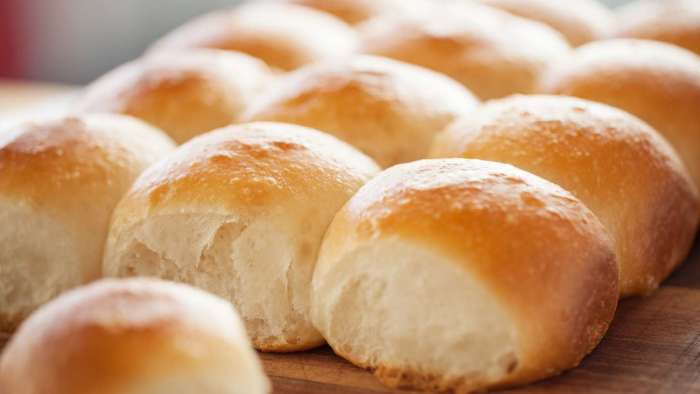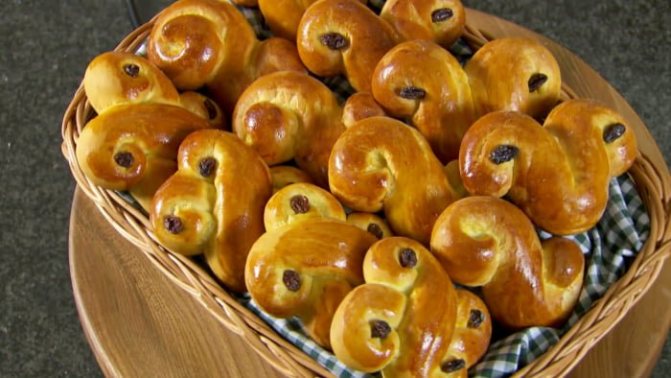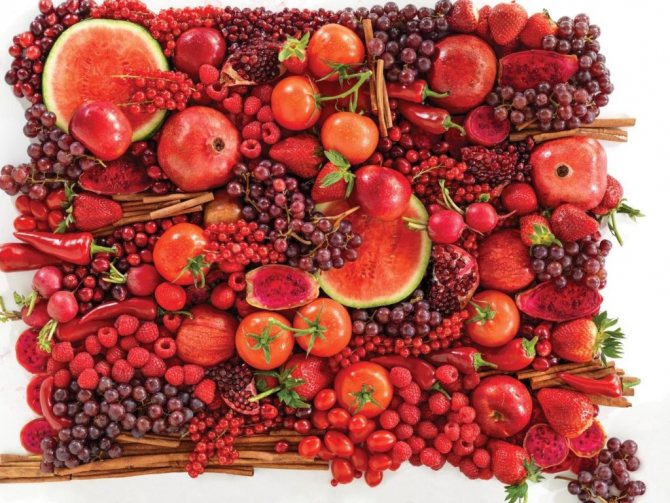Author:
gastroenterologist Anton Smirnov
4 minutes
3950
During breastfeeding, a woman may feel hungry much more often and stronger than usual, and this is normal. The process of making breast milk in the body increases daily energy requirements by about 500 calories. There is also an increased need for specific nutrients such as protein, vitamins D, A, E, C and B12, selenium and zinc.
Here are some healthy and tasty foods that you should include in your diet while breastfeeding, provided that you have no contraindications to them:
- Fish and seafood: salmon, seaweed, shellfish, sardines;
- Meat and poultry: chicken, beef, lamb, pork, liver;
- Fruits and vegetables: berries, tomatoes, sweet peppers, kale, garlic, broccoli;
- Nuts and seeds: almonds, walnuts, chia, flax and hemp seeds;
- Healthy fats: avocado, olive oil, coconut, eggs, full-fat yogurt;
- Fiber-rich starches: potatoes, butternut squash, sweet potatoes, beans, lentils, oats, quinoa, buckwheat. Note that it is recommended to introduce legumes into your diet no earlier than the baby turns three months old in order to avoid problems with excess gas formation;
- Other foods: tofu, dark chocolate, kimchi, sauerkraut.
It is also worth minimizing your consumption of fast food and sugary breakfast cereals, which can be replaced with muesli and granola, for example.
General rules
One of the main points in the matter of nutrition is its balance. It is important that the food that the young mother eats contains all the vital elements to the maximum. Proteins, fats and carbohydrates in an optimal ratio, various microelements (in particular, iron, calcium, iodine), vitamins - these and many other useful substances must be included in the diet of a nursing woman. A strict diet for breastfeeding is suggested in the first month or two from the baby’s birth, since the baby’s digestive system is not yet ready to digest complex foods, and all this time the baby eats the same thing that the mother herself eats. Therefore, it is better to exclude fried foods and high-fat foods from the menu. Many people think that a nursing mother should eat for two, in theory this is true, but in practice it is just enough to add some nutritious, high-calorie dishes to the diet. The daily calorie intake during lactation reaches 2700, then, as complementary foods are introduced, this figure can be reduced.
Of the nutrients, a nursing mother should consume protein - a valuable component found in meat, fish, dairy products, and cereals. It happens that in order to better absorb one ingredient in the body, it is worth eating more foods containing the second. For example,
In order for the body, depleted by pregnancy and childbirth, to more easily absorb calcium, which nursing mothers almost always lack, it is worth consuming ingredients containing magnesium.
These are sesame seeds, sunflower seeds and pumpkin seeds. Calcium, in turn, is necessary to prevent the development of rickets in an infant and promotes proper growth and formation of bone tissue. Most of it is found in cottage cheese, milk, kefir or cheeses. Often, young children can react very sharply to cow protein; in this case, dairy products are removed from the nursing diet, and they try to leave fermented milk products. But if signs of allergy persist, then it is better to stop using such ingredients.
All new ingredients should be introduced into the diet gradually, first starting with a small piece or teaspoon of any component. After the first test, wait a pause of up to several days to see the baby’s reaction. Only after the child has accepted and tolerated the new food well, the portions are gradually increased.
You need to cook for a nursing woman using foods that prevent gas formation, otherwise the baby will have digestive problems, which will cause colic and sometimes intestinal upset. Therefore, in the first few months, the mother should carefully monitor her diet and feed the baby only with breastfeeding or an adapted formula. Supplementary feeding is not used during this period.
The amount of the right fluid up to two liters per day will allow a nursing mother to avoid its deficiency and maintain lactation at a sufficient level.
If the baby was born through surgery, then after a cesarean section the new mother should be doubly responsible when it comes to nutrition. The female body has to recover for quite a long time after childbirth, and even more so after undergoing anesthesia. Proper nutrition during this period should be aimed at restoring the digestive system, while the caloric content of dishes should be significantly higher. You should also not forget about lactation, so for normal milk production you should eat protein foods, as well as drink more warm liquids.
How to properly introduce flour during breastfeeding
When expanding the menu of a nursing mother, the main principles are gradualism and observation. That is, we begin to introduce the product with a minimum amount in the first half of the day, carefully monitoring the baby’s reactions. And add to the norm in several stages. Let's look at it in detail:
- In the first week after childbirth you can: pasta made from durum wheat (start with 50–80 grams), wholemeal bread (start with 1 piece), crackers, dried bread without additives, biscuits.
- In the first month, you can expand the menu, making sure that the products from the first list are tolerable. Add white bread. We start with half a piece in the morning and work up to 3 pieces per day.
- At 2–3 months, you can introduce grain bread enriched with vitamins and fiber. You can diversify your diet with crispbread and dry biscuits made from corn, buckwheat, oatmeal, oatmeal, corn, and shortbread cookies.
- After 3 months, we return to normal nutrition, look at the child’s reaction, and take into account the calorie content.
Features of the diet for a nursing mother
When feeding, a woman should follow a number of simple rules that affect lactation and her health:
- You need to eat regularly throughout the day. In addition to breakfast, lunch, dinner, it’s worth adding a couple more snacks. It is best for a mother to eat 30-40 minutes before feeding the baby;
- food should be consumed boiled, stewed, baked or steamed;
- Menu dishes for a nursing woman should be fresh, made from natural ingredients. You should not eat processed foods, canned food, or pickled foods;
- consume dairy or fermented milk products. Depending on the baby’s reaction and the mother’s health, you can eat cottage cheese, cheeses or drink goat’s milk, which also contains a large amount of calcium;
- eat meat and fish dishes (low-fat varieties or poultry);
- Introduce plenty of drinking into the menu. If everything is fine with the mother’s lactation, then you should not drink more than two liters of liquid - other problems with the kidneys, edema or lactostasis will appear. About a glass of clean drinking water can be drunk immediately before feeding the baby;
- You should remove from the menu all foods that can cause fermentation or bloating. A list of foods allowed and prohibited for consumption while breastfeeding is given here ;
- raw fruits or vegetables should be consumed rarely; baked fruits will be much healthier;
- You should not eat crops containing coarse fiber, for example mushrooms. The baby's body cannot cope with such products.
The most difficult period is the first months after birth. You can find out how to feed a nursing mother in the first month after giving birth here . Over time, the menu becomes much more diverse. You should not try several new ingredients at the same time, this will make it easier to determine which product your child is allergic to.

Problems with the baby’s gastrointestinal tract and, as a result, his anxiety and whims are possible reactions on the part of the child to foods eaten by the mother.
Which dough is suitable for nursing
The key factor when choosing buns is the dough from which they are made. As a rule, manufacturers use wheat flour. But, as we have already understood, it is the least useful and can cause harm. Here you will hardly find natural carbohydrates, fats, proteins, vitamins and minerals. Among other things, such flour is bleached using benzoyl peroxide or the E928 additive, which is extremely dangerous.
In addition, during lactation and for small children, dough made with yeast and using a large number of eggs is not recommended. Yeast increases colic and flatulence, provokes disturbances in stool and intestinal microflora, reduces immunity and slows down metabolism.
Chicken eggs are a strong allergen, so babies often have a negative reaction after eating such buns. In addition, due to the cholesterol content, chicken protein negatively affects the functioning of the heart and blood vessels, leading to diseases of these organs.
By the way, you should never eat raw eggs. They take a long time and are difficult to digest, causing severe stomach upset, digestive problems and flatulence. Raw eggs or with minimal heat treatment provoke pullorosis and other intestinal infections. In addition, they can cause salmonella infection.
For breastfeeding, you can use rye and whole grain flour, flour with bran. First grade wheat flour is allowed. If your baby is allergic to gluten, choose special gluten-free flour. By the way, it is useful when children or mothers are underweight. Gluten-free cereals and flours include corn, rice and buckwheat.
To make buns, choose dough without eggs or yeast. If necessary, you can replace chicken eggs with quail eggs. By the way, yeast dough is an excellent substitute for kefir dough. We offer the recipe for these buns below.

Possible consequences of non-compliance with the diet
If non-compliance with the diet is not particularly scary for the mother, then for the baby the consequences can be the most severe. First of all, the baby’s health will worsen - physiological colic of a newborn already torments babies until about six months, plus a reaction to foods eaten by the mother will be added to this. The child suffers from bloating and increased gas production, becomes restless and moody, that is, his digestive and nervous systems suffer.
In addition to these difficulties, a violation of the diet by the mother can cause allergies - rash, itching, redness on the skin. In some cases, such reactions in a newborn can only be cured by resorting to medications.
For the mother herself, who likes to eat prohibited foods, the possible consequences of not following the diet will result in problems with excess weight or lactation problems.
After all, there are ingredients that worsen the taste of milk, which may cause the baby to refuse to breastfeed, or foods that affect the production and fat content of breast milk. That is why it is better to eat your favorite culinary delights after the final cessation of feeding.
Possible harm and danger
Increased gas formation and flatulence, increased colic in a child are the most common reactions in newborns and infants up to three to four months to such products. The presence of sugar, cinnamon and other additives can easily cause an allergic reaction, diathesis and dermatitis in young children.
Food allergies have the following symptoms:
- Swelling, rash on the body, itching;
- Nasal congestion and runny nose;
- Redness and irritation of the eyes, tearing;
- Difficulty breathing caused by internal swelling of the airways;
- Nausea, vomiting and abdominal pain;
- Anxiety and sleep disturbances are additional signs.
If you notice these symptoms in your child, exclude the product from the baby’s diet and consult a doctor. Internal swelling is especially dangerous. For more information on what to do if you have food allergies in children, see here.
In addition, baking provokes excess weight. You need to be especially careful when consuming products made from yeast dough. Yeast in the body can cause a fermentation process, which leads to severe poisoning and disruption of the intestinal microflora.
The effect of buns on the body of mother and child depends on the quality and type of flour, filling and other components. Unfortunately, today's products often contain harmful dyes, preservatives, thickeners and other chemical additives. This composition has a negative impact on health and well-being.

Sample menu for a mother for a week during guard duty
During the first few months, while mom gets used to the new rhythm of life, drawing up a weekly menu will help ease household chores. So, at the end of the next week you can already make a shopping list of the necessary products. The table shows an approximate weekly diet for breastfeeding. The menu is quite varied, yet balanced and nutritious.
| Monday | Breakfast: oatmeal with water, cottage cheese, baked apple Lunch: light vegetable soup, pasta, boiled fish, tea, oatmeal cookies Afternoon snack: compote, crackers or cookies Dinner: side dish of vegetables, steamed meat cutlet, kefir |
| Tuesday | Breakfast: boiled egg, bread, a little butter, sweetened tea, stewed vegetables Lunch: fish soup, buckwheat with chicken breast, fermented baked milk, green apple Afternoon snack: banana, kefir, bread Dinner: baked vegetables with potatoes |
| Wednesday | Breakfast: millet porridge, tea, dried fruit mixture Lunch: vegetable soup, boiled meat with a side dish of rice and broccoli, compote Afternoon snack: cheesecakes, baked in the oven or steamed, kefir Dinner: vegetable salad, poultry, fermented baked milk |
| Thursday | Breakfast: rice porridge, bread with a piece of butter, tea Lunch: borscht, steamed vegetables, pasta, baked chicken breast, kefir, cookies Afternoon snack: compote, fruit salad, oatmeal cookies Dinner: poultry, side dish of stewed vegetables, fermented baked milk |
| Friday | Breakfast: millet porridge, tea, cottage cheese, apple Lunch: chicken broth soup, boiled fish and potatoes, compote Afternoon snack: fermented baked milk, cottage cheese casserole Dinner: steamed vegetables, boiled egg, kefir |
| Saturday | Breakfast: buckwheat porridge with milk, baked apple, kefir Lunch: vegetable broth soup with meatballs, boiled meat, boiled potatoes, vegetable salad, compote Afternoon snack: tea, a couple of slices of dark chocolate Dinner: baked beef, vegetable salad, fermented baked milk |
| Sunday | Breakfast: oatmeal with fruit, tea, crackers Lunch: vegetable lean soup, poultry, pasta, kefir, bread with a piece of cheese Afternoon snack: dried fruit compote, cottage cheese Dinner: baked meat, steamed vegetables, fermented baked milk |

A strict diet and eating “for two” is not only not healthy, but definitely harmful for a nursing mother.
What drinks can and cannot be consumed?
Fluid consumption is important for lactation, removal of waste and toxins from a woman’s body, and normal kidney function. The diet during breastfeeding should contain non-carbonated clean water, fruit drinks, freshly squeezed juices, compotes, special teas, rosehip decoction, drinking yogurt, kefir.
In the first months of breastfeeding, it is advisable to cook one-component compotes. Do not use sugar during cooking.
Important! Juices, compotes and other drinks made from exotic, citrus, out-of-season vegetables, fruits and berries are prohibited.
It is advisable to drink teas special for breastfeeding. Dill and fennel for lactation, lemon balm and mint soothe, help with stress, nettle helps with iron deficiency. Green and black tea are also allowed.
Prohibited drinks:
- alcohol;
- soda;
- industrial juices, fruit drinks;
- strong tea;
- coffee.

Fennel tea to increase lactation
Common myths about the breastfeeding diet
One mother prefers to attend classes for pregnant women during a consultation, where they give valuable advice about breastfeeding, lifestyle during pregnancy and after. Someone reads information on the Internet and relevant literature about what to eat in order to increase and continue lactation. And some mothers listen to their grandmother’s advice and eat everything as before, then give their babies dill water while waiting for the baby’s tummy to go away. After all, they say “how many people, so many opinions.” Various misconceptions and myths cannot be avoided in such a common topic. It is better to listen to all the advice, transfer the knowledge gained to your situation and draw appropriate conclusions, than to listen to everything in a row, being afraid to take an extra step to the side. The main myths about nutrition during breastfeeding are given below:
- Breastfeeding requires a strict diet. In practice, there is no diet as such, you just need to stick to a healthy diet. Sometimes, after hearing a lot of “helpful” advice, mom thinks that she can only eat Maria cookies, tea with milk, and boiled meat with buckwheat. After such a diet, the baby does not get enough of breast milk, and the mother has absolutely no strength to care for the baby. You need to limit the consumption of truly harmful foods - soda and pizza, alcohol, as well as clearly allergenic ingredients - exotic dishes, some seasonal berries. A nursing mother should gradually and wisely introduce all other foods into her diet in order to receive a sufficient amount of useful microelements and the pleasure of delicious food.
- For lactation you need to drink tea with milk and any milk drinks in large quantities. In fact, the amount of fluid consumed has no effect on milk production. The amount of milk in the mother's breasts is exactly what the baby needs. The more often the baby is put to the breast, the more milk is available. On the contrary, consuming milk protein in large quantities can provoke an allergic reaction in a baby. Tea may also contain various herbs that will negatively affect lactation, for example, mint or sage. Due to the fact that a nursing mother’s diet is higher in calories than in a normal period of life, she really needs to drink more liquid, but within reasonable limits. Fatty foods act in the same way - nuts, honey, cream; they will not make mother's milk fattier and more nutritious, but will only lead to problems with the liver, stomach, constipation and excess weight.

Not eating red foods is one of the common myths, following which will not bring any benefit to a nursing mother if no one in the family has previously been allergic to such foods. - You should not eat red apples, bell peppers, tomatoes and other colorful vegetables and fruits. If in normal life, before pregnancy, no one in the family had an allergy to such ingredients, then the child is unlikely to have one. It is much more dangerous to eat greenhouse cucumbers in winter or bulk, almost glossy apples of foreign origin. Any product, even carrots and beets, should be introduced into the mother’s diet gradually and monitor the child’s condition, regardless of what color the dish is.
- It is worth limiting meat dishes, as they are too fatty and difficult to digest. In moderation, poultry or beef, boiled or baked, will not harm mother and child in any way, but on the contrary, will bring the body many nutrients and vitamins. But pork with mayonnaise with mushrooms is certainly harmful when breastfeeding. You should also not eat duck meat - it is difficult to digest in the body, but you can eat turkey.
- When feeding an infant, you should not eat sweets. This statement should not be taken literally. It is not advisable to eat sugar in large quantities and fresh baked goods, you should not eat milk chocolate and other sweet desserts, but oatmeal cookies, homemade marshmallows and a few shares of dark chocolate once a week are allowed. First of all, you need to know moderation in everything.
- A nursing woman needs to eat for two and as much as possible. Nursing mothers are advised to eat a little more than in a normal period of life, not because it will produce more milk. Production and nutritional properties do not increase depending on the serving size. Rather, on the contrary, no mother will benefit from eating through force. That is why they say that nutrition must be balanced in order to replenish all the necessary elements that the female body expends during feeding, varied and nutritious, so that the young mother has enough strength to cope with physical activity, and her body receives the full range of necessary vitamins.
There are definitely some restrictions in the diet of a breastfed mother. But they are not too far from the usual norms of proper nutrition, for example, of athletes. It is important to follow a more strict diet only for the first time; in subsequent months, the diet of a nursing woman becomes more and more varied. At the same time, every mother should understand that she experiences such difficulties for the benefit of her baby, and what cannot be done for the health of her child.
Are there any benefits from buns?
The advantages of flour and bakery products include satiety. One bun will easily and for a long time satisfy your hunger and give you additional energy. It will improve muscle tone and improve mood, and can maintain the elasticity and beauty of the skin.
The beneficial properties of baked goods depend on the composition of the product. Buns made from wheat flour are considered the least healthy. They are cheaper to produce, and the products are fluffy and tasty. Therefore, you will most often find this type of product on the shelves.
Experts advise giving preference to baked goods made from coarse rye flour. They include a large number of vitamins, minerals and nutrients. And the calorie content of products is much lower than that of products made from wheat flour. Rye buns stimulate digestion, fill the body with energy and improve emotional well-being, improve mood and help fight stress.
Bran buns are also useful, as the product contains a high content of fiber and iron. They have a positive effect on the functioning of the intestines and stomach, improve digestion without overloading the internal organs. Due to the iron content, the product has a beneficial effect on blood composition and circulation, and is useful for anemia.
Butter buns include vitamins A and E, vitamin A, sodium and phosphorus, potassium and calcium. This composition improves the condition of the skin and hair, improves vision and strengthens bones, improves the functioning of nerve cells, and restores hormonal and emotional levels. However, such buns contain harmful cholesterol and starch.

When is a hypoallergenic diet necessary?
The most strict diet in 1 month, no allergens should be included in the diet. The diet when breastfeeding a newborn is always hypoallergenic. Even basic food items are not all included in the menu.
If the baby is prone to allergic reactions, the breastfeeding diet will be hypoallergenic throughout the entire feeding period. Expanding the list of foods consumed must be accompanied by keeping a food diary. In order to immediately determine the cause of any change in the child’s condition related to nutrition.
A pregnant woman, when introducing a new ingredient into her diet, should focus on the reaction of the newborn. Allergy symptoms may include hives, dermatitis, and more frequent regurgitation. Colic, bloating, and unreasonable crying may also indicate intolerance to a particular product by the child. In this case, the ingredient must be excluded from the menu. Later try to reintroduce it into your diet.
The older the child gets, the less strict the lactation diet becomes. The need for a hypoallergenic menu remains only for children prone to allergic reactions. Often such manifestations can occur due to problems with the child’s digestive tract. Improving the functioning of the gastrointestinal tract leads to the disappearance of false allergic reactions.










